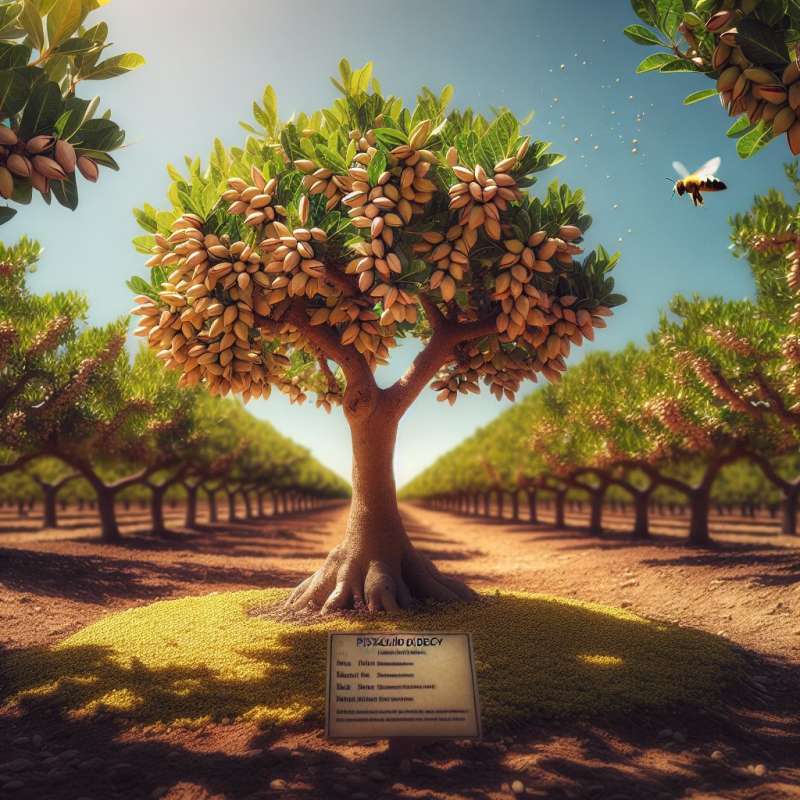
Pistachio: Botanical Introduction
The Pistachio tree, scientifically known as Pistacia vera, belongs to the Anacardiaceae family. Originating from Central Asia, it thrives in arid climates with hot summers and cold winters.
Ancient Tree with History
Cultivated for over 10,000 years, pistachios are one of the oldest flowering nut trees. Historical texts mention them as a delicacy in the Babylonian gardens of Mesopotamia around 7000 B.C.
Unique Pistachio Attributes
Pistachios are dioecious, meaning individual trees are either male or female. Only the female trees bear fruit, but they require a male tree nearby for pollination.
Long Growth Before Harvest
Pistachio trees take about 10-12 years to produce their first significant crop. However, once mature, a single tree can yield nuts for over a century.
Nutritional Powerhouse Unveiled
Pistachios are a source of nutrients including protein, fiber, and antioxidants. They contain fewer calories and more potassium and vitamin K per serving than other nuts.
Harvesting: A Mechanized Shake
Ripe pistachios are harvested mechanically by machines that shake the trees. The nuts fall onto tarps and are then collected, processed, and dried.
Pistachios' Ecological Impact
Pistachio cultivation requires less water compared to other nuts, making them an environmentally friendlier choice. Their deep root systems also help prevent soil erosion.Pistachio Resilience Revealed
Pistachio trees can survive temperatures as low as -10°C (14°F), showcasing their incredible adaptability to harsh climates.
What family does Pistacia vera belong to?
Rosaceae family
Anacardiaceae family
Fabaceae family
Company